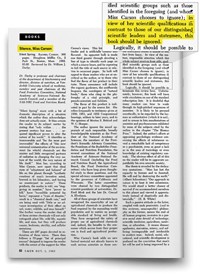Advertisement
Grab your lab coat. Let's get started
Welcome!
Welcome!
Create an account below to get 6 C&EN articles per month, receive newsletters and more - all free.
It seems this is your first time logging in online. Please enter the following information to continue.
As an ACS member you automatically get access to this site. All we need is few more details to create your reading experience.
Not you? Sign in with a different account.
Not you? Sign in with a different account.
ERROR 1
ERROR 1
ERROR 2
ERROR 2
ERROR 2
ERROR 2
ERROR 2
Password and Confirm password must match.
If you have an ACS member number, please enter it here so we can link this account to your membership. (optional)
ERROR 2
ACS values your privacy. By submitting your information, you are gaining access to C&EN and subscribing to our weekly newsletter. We use the information you provide to make your reading experience better, and we will never sell your data to third party members.
Biomaterials
Newscripts
Reanimated spider bots and garden mysteries
by Brianna Barbu
October 30, 2023
| A version of this story appeared in
Volume 101, Issue 36

New life for dead spiders
If you’ve ever wanted to have your own personal army of miniature zombie robots, this story is for you. It turns out that all it takes to reanimate a dead spider is a needle, some glue, and a syringe, according to engineers from Rice University (Adv. Sci. 2022, DOI: 10.1002/advs.202201174).
Daniel Preston’s lab works on soft robotics that use nontraditional materials—usually that means stuff like rubbers and gels. But in this case, it means spiders.
Faye Yap, the graduate student who led the project, tells Newscripts that the concept originated when she found a dead spider in a forgotten corner of the lab and was curious about why it had curled up. She learned that spider limbs operate hydraulically. From there, it was only a short inductive leap to realizing that it is not only possible, but incredibly easy to turn dead spiders into tiny hydraulic actuators.
Yap and her fellow reanimation researchers euthanized wolf spiders and inserted needles into their backs—secured and sealed with a drop of superglue. That enabled them to open and close the spiders’ legs using a syringe to control the pressure. The result was an unconventional yet highly effective mechanical gripper for small, delicate objects, including other spiders.
Spiders are “basically the robotic component that nature has built for us,” Preston tells Newscripts. He says that the so-called necrobots his lab makes aren’t really so different from mechanical devices made from leather or wood or any other material sourced from formerly living things. Plus, unlike conventional robot parts, spiders are biodegradable.
This research was honored with a 2023 Ig Nobel Prize in mechanical engineering and garnered a mention onThe Late Show with Stephen Colbert.
Yap and Preston say this is just the beginning of their necrobotic explorations. They’re working on a number of improvements to the spider bots, including moving each leg separately and adding wireless controls. And they envision that their reanimation techniques could be easily extended to other crawly critters, such as scorpions.
Where the bodies are buried

Gardens and the many things inside them are a timeworn trope in whodunits, as avid gardener, mystery reader, and nonfiction writer Marta McDowell explains. Her book Gardening Can Be Murder systematically reviews the role of horticulture in whodunits from the 19th century to the present day.
McDowell structured her previous books as biographies of writers and their gardens, but she organizes Gardening Can Be Murder around the common elements of the mystery genre. The book includes chapters discussing gardens as settings, characters and authors with a fondness for flora, and of course the myriad ways that garden tools and plants (and the chemical substances within) can be used to commit dastardly deeds.
“It’s really a survey of detective fiction through the lens of the botanical and horticultural world,” McDowell tells Newscripts. “There are facts about botany and facts about chemistry and facts about the authors.”
Though McDowell is not a scientist by profession—she spent 20 years in the corporate world before devoting herself to horticulture and nonfiction writing—she says she appreciates how the scientific method connects gardening and mystery solving.
McDowell says she delighted in learning and sharing how scientific facts found their way into detective fiction. She gives Agatha Christie as the classic example of a mystery writer who used real chemistry and toxicology—picked up during Christie’s work in a pharmacy during World War I—to devious effect in her novels.
Asked what her perfect horticultural crime would be, McDowell says she’d procure spider venom from her neuropharmacologist cousin and paint it on rosebushes for a rival gardener to discover on pruning day.
Please send comments and suggestions to newscripts@acs.org.





Join the conversation
Contact the reporter
Submit a Letter to the Editor for publication
Engage with us on Twitter